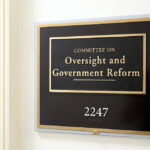Having both Federal Employees Health Benefits (FEHB) and Medicare Part B in retirement offers several key advantages, especially for federal retirees. Here’s a breakdown of the benefits:
Comprehensive Coverage: FEHB provides broad health insurance coverage, including hospital stays, doctor visits, and prescription drugs, while Medicare Part B covers outpatient services like doctor appointments, preventive care, and medical equipment. Together, they create a robust safety net, reducing gaps in coverage.
Cost Sharing: When you have both, Medicare Part B often acts as the primary payer for services it covers, and FEHB can serve as a secondary payer, picking up costs like copayments, coinsurance, or deductibles that Medicare doesn’t fully cover. This coordination can significantly lower your out-of-pocket expenses.
FEHB Wraparound Benefits: Many FEHB plans “wrap around” Medicare, meaning they waive or reduce their own deductibles and copays when Medicare pays first. This can make healthcare more affordable compared to having Medicare alone or FEHB alone.
Access to Providers: Medicare Part B gives you access to a wide network of providers who accept Medicare, while FEHB offers additional plan options (like HMOs or PPOs) that might include providers or services not covered by Medicare. This dual coverage can increase your flexibility in choosing healthcare providers.
Prescription Drug Coverage: FEHB plans typically include drug coverage, and you may not need a separate Medicare Part D plan. In some cases, FEHB drug benefits are more generous than Part D, saving you money and simplifying your coverage.
Protection Against High Costs: With both plans, you’re better shielded from catastrophic medical expenses. For example, Medicare Part B has no out-of-pocket maximum, but FEHB’s secondary coverage can cap your costs, depending on the plan.
That said, there are some considerations: You’ll pay premiums for both FEHB and Medicare Part B (about $174.70/month for Part B in 2025, plus your FEHB plan’s cost), so it’s worth evaluating if the added coverage justifies the expense based on your health needs. Some retirees find the dual coverage redundant if their FEHB plan is already sufficient, but for most, the peace of mind and financial protection make it a smart combo.
Keep in mind that there is a seven-month window around your 65th birthday when you are eligible to enroll in Part B. Unless you’re covered by FEHB and still working under FERS or CSRS, enrolling in Part B after this window closes results in a 10% premium increase for each year you delay. This means that if you decide down the road that you would like the security of dual coverage, it will cost you more.
Reach out to a Federal Retirement Consultant® who can help you navigate your federal benefits.


























